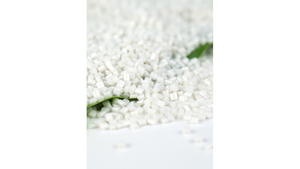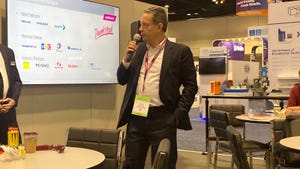IMM's Plant Tour: Manufacturing, Medical Style
September 18, 2000
Imagine, if youwill, outsourcing on steroids. That phrase only begins to defineMedSource Technologies, a contract manufacturer for the medicalmarket. While this all-encompassing group has 10 locations, itsmolding facility-MedSource Danbury-is the focus of our tour. Formerlyknown as Tenax, a medical molder, this operation has undergonea rebirth of sorts, emerging as a world-class-capable moldingand assembly arm of the overall organization.
The journey to this molding nirvana began last January, whenTenax agreed to join MedSource. In April 1999, MedSource Technologiesentered the market with an idea borrowed from the electronicsindustry-offer medical customers the same type of art-to-part-to-deliveryservices prevalent at giants such as Flextronics and Trend Technologies."Our mission," says Dean Tulumaris, gm/vp of MedSourceDanbury, "is to offer supply chain solutions as a single-source,strategic, world-class supplier. To do this, we must be flexiblein adapting to customer needs. In effect, we want to be able toreact yesterday."
Class Conscious
What exactly is world-class molding? According to Tulumaris,it is a process of continuous improvement in the entire operation,including quality, delivery, costs, and lead times. There areseveral critical success factors that MedSource Danbury focuseson: process improvements, including schedule attainment and customerdelivery times of 100 percent; quick change mold setups, or SMED(single minute exchange of dies); SPC (statistical process control);TPM (total preventive maintenance) for all equipment; and inventoryturns.
"Speed to market is critical," Tulumaris says, "andto address this issue we need to reduce manufacturing lead times.During a weekly meeting, our associates ask what three thingshave been done to improve quality, delivery, and productivity."(All of the employees at this plant are called associates, a practicethat identifies them as contributing members of the group effort.)Another regular feature of the meeting involves taking a processsuch as insert molding or assembly, and then developing a planto take out or minimize any nonvalue-added activities.
For instance, a recent consensus on molding process improvementcame up with the following four recommendations: design the partfor moldability, look at the mold design for potential productivityimprovements, optimize processing parameters, and stick to anaggressive TPM program.
An interesting feature at MedSource Danbury is its method forscheduling on the shop floor. All scheduling is done by the associates,who have access to all pertinent project information. In addition,a specific associate is assigned responsibility for each customer'sshipping. "Our associates know these projects intimately,and are the best qualified to do scheduling," adds Tulumaris.
Scheduling involves grouping jobs with similar materials together,as well as reviewing requirements for capacity, material, andstaffing to ensure that customer order due dates are met. To dothis, associates communicate during daily meetings that involvemembers of all departments. "Basically, we are optimizingoperations for both human resources and equipment," he says,"and many efficiencies come from this look-ahead scheduling."
Another secret of efficiency, according to Tulumaris, liesin using the "pull" process, in which the plant onlyproduces what the customer orders throughout the manufacturingprocess. Along with this system, Danbury also employs kanban conceptsto identify waste and constraints in the process, and then usesa continuous improvement program to eliminate waste and breakconstraints.
"We also use this pull process when ordering from ourmain suppliers," he adds. Going to a just-in-time orderingsystem with its resin suppliers, for example, has enabled Danburyto cut its materials storage space in half. Tulumaris has plansto add manufacturing space where empty shelves now sit.
Additional factors in world-class molding that are evidentthroughout the plant include an emphasis on creating "thevisual factory" and a method for systematic housekeeping.
Shop-floor Specifics
Danbury's operations are housed in an older facility that wasdesigned as a series of large rooms. As a result, operations aredivided into four molding rooms, a Class 100,000 cleanroom assemblyarea, and a full-service quality assurance lab, as well as shipping,tool staging, materials storage, design engineering, and officespace.
Molding Room 1 contains nine Kawaguchi presses (up to 140 tons)along with a scheduling board for all jobs. As in all other moldingrooms, each press is clearly numbered and a plaque is attachedto the end of the machine. The dry-erase plaque contains all thepertinent information for the job running at the time. All boardsand signage are clearly labeled, helping the plant achieve itsgoal of becoming a visual factory.
Visitors also notice that this is a bright and orderly room.Abundant overhead lighting and a shiny, light-colored floor arethe sources of this effect. Housekeeping chores are made easierby white-taped areas (kanban squares) that show where all equipmentand worktables should go. Even tool carts for mold changes areefficiently designed and labeled. They are injection molded (ofcourse) with two shelves. On the top shelf, a large piece of foamwith cutouts for the proper tools helps keep mold changing essentialsclose at hand. There is also a separate area for spray cans andsmaller items.
Danbury even has a formal housekeeping program, known as the5-S plan. It encourages logical steps to keeping things in order:sort, set in order, shine, standardize, and sustain.
Molding Room 2 contains 12 Kawaguchi presses, one all-electricNiigata, and a 30-ton Newbury/Van Dorn Demag vertical press witha rotary table for insert molding. A cleanroom environment inMolding Room 3 keeps particulate counts low for critical parts.Here, associates wear hair nets and lab coats. Fewer operatorsare needed because all 13 Kawaguchis are equipped with pick-and-placerobots. Most of the parts produced here are destined for the cleanroomassembly area. Molding Room 4 houses the two largest presses,both 450-ton Kawaguchis.
Danbury's Class 100,000 cleanroom assembly area is a modelof cellular manufacturing efficiency. Arranged in a flexible workcellformat, the room can be configured to accommodate a variety ofprojects. Each workcell is labeled clearly, again to meet visualfactory standards. Automation is installed as needed, often designedby the process technicians in-house. At other times, associatesdevelop an idea, and then work with an automation supplier tobuild it. As products are assembled, they are conveyed to thecleanroom boxing area adjacent to the assembly room for packaging.
Keys to Contract Manufacturing
When asked how the Danbury facility is able to connect withall of the other MedSource locations as well as maintain productioninternally, Tulumaris answers, "Our greatest asset is ourpeople, and fostering communication between them is the key toutilizing their talent internally. Likewise, communication withother MedSource facilities keeps our operations in sync."
Dave Ferguson, operations manager for assembly, believes thatjoining MedSource has definitely improved the flow of informationbetween different departments. "Lead operators from molding,secondary operations, and assembly now discuss how to make projectsmore efficient for all of them," Ferguson says. "Theyask how a change they want to make will affect other functions.Cross-functional training has helped give everyone an eye towardtheir colleagues' issues."
Self-directed teams, for example, meet regularly to reviewdeliveries to customers. Discussions include ways to meet deliverydates, anticipated problems and how to solve them, or why a datewas missed and how to prevent it in the future. Team members leavewith a list of action items assigned to responsible parties.
Of the nine other MedSource facilities, Danbury is most closelyintegrated with the Pittsfield, MA facility. (Formerly known astoolmaker Apex, MedSource Pittsfield has moldbuilding, maintenance,and design services.) In addition, Danbury associates must alsocoordinate projects with other MedSource divisions in Englewood,CO (stamping, knives), Corry, PA (precision metal injection molding),Orchard Park, NY (precision machining), and others.
An intelligent sales system helps ease the process, accordingto Tulumaris. Nine sales managers across the U.S. sell the fullrange of MedSource Technologies' capabilities. They fill out aquote qualifier and send it to an application engineering managerfor verification and process determination.
Danbury reviews the project, and then consults a program managerwho is dedicated to that project. This person maintains all theconnections, validations, quoting, and Gantt charts for cost anddelivery. This is the one contact for the customer and the restof MedSource. Program managers then work with the associates whomake the product, reviewing assembly methods, molding parameters,and secondary operations. Program managers coordinate all aspectsuntil the project is in full production, when it is handed offto a customer service liaison.
Contact information |
You May Also Like


